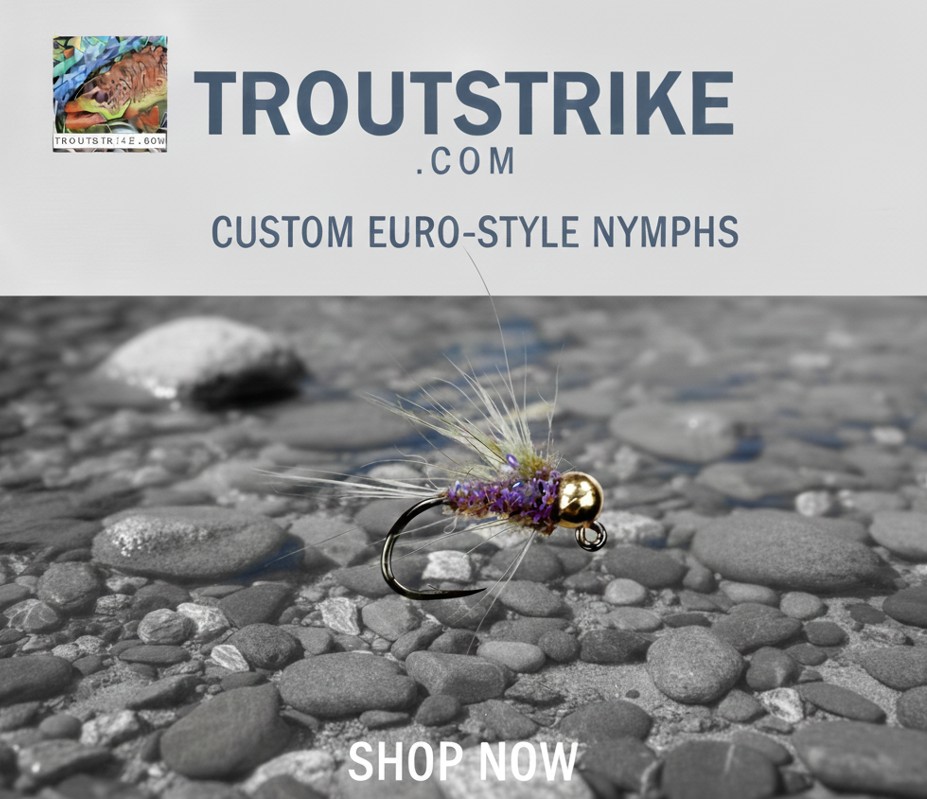The mono rig leader is a game-changer in tightline and Euro-style nymphing, offering unmatched control and sensitivity in your presentations. Unlike traditional fly lines, the mono rig has significantly less mass. This reduction in mass reduces drag and interference on your nymphs. It allows them to drift more naturally through the water. This low-mass setup lets you keep a direct connection with your flies, crucial for detecting subtle strikes in complex currents. The tapered design of the leader enhances casting accuracy. The built-in sighter makes strike detection easier and more precise. Simply stated, a well-constructed mono rig leader forms the foundation of successful tightline nymphing. It enables the finesse and control needed to excel in your Euro-nymphing game.
What You’ll Need
- 20 lb Maxima Chameleon (for the butt section)
- 12 lb Gold Amnesia (for the transition section)
- 10 lb Gold Stren (top half of the sighter)
- 2X Bi-color Sighter Material (bottom half of the sighter)
- Tippet Rings
- Fluorocarbon Tippet (3X–6X, depending on water conditions)
Step 1: The Butt Section
To start, measure out 24 feet of 20-pound Maxima Chameleon. This will serve as the butt section of your leader, providing the mass necessary for effective casting. I like to spool this section onto a foam ring or an empty Maxima spool for easy storage. The 20-pound test helps keep casting smooth and manageable, especially if you’re new to tight line nymphing.
Step 2: The Transition Section
Next, measure four feet of 12-pound Amnesia. This highly visible material forms the transition section, which helps taper your leader and improves casting accuracy. One of the best things about Gold Amnesia is that it doesn’t retain memory. It will stay straight and won’t coil, even after being stored.
Step 3: Connect with a Blood Knot
Now, use a blood knot to connect the 12-pound Amnesia to the butt section. The blood knot is ideal for leader building. It creates a smooth, streamlined connection. This connection passes easily through your rod guides. If you’re unfamiliar with the blood knot, check out this video for a quick tutorial.
Step 4: The Sighter – Top Half
The next section is the sighter, which helps you see subtle takes when tight line nymphing. Measure out 12 inches of 10-pound Gold Stren. This material is highly visible and has a thinner diameter than the previous sections, helping to continue the taper. Use another blood knot to attach the Gold Stren to the Amnesia.
Step 5: Attach a Tippet Ring
Good news—we’re done with blood knots! Now, it’s time to add a tippet ring to the end of the Gold Stren. Tippet rings are tiny but important because they make it easy to switch tippet lengths and diameters. First, feed the Gold Stren through the tippet ring attached to a swivel. Next, tie a clinch knot. After securing the knot, remove the ring from the swivel.
Step 6: The Sighter – Bottom Half
Measure 14 inches of 2X bi-color sighter material and leave some extra length for tying the knot. Use another clinch knot to attach this to the tippet ring. This section stays above the water and is the part of the leader you’ll focus on while nymphing.
Step 7: Add a Second Tippet Ring
Finally, tie a second tippet ring to the end of the bi-color sighter material using a clinch knot. This second tippet ring is where you’ll attach your fluorocarbon tippet, allowing you to customize your leader for different conditions.
Step 8: Attaching the Tippet
The mono-rig leader works best with fluorocarbon tippet. The range is from 3X to 6X. Use lengths between 3 and 6 feet, depending on the depth and speed of the water. Adjust the tippet length based on the conditions you’re fishing.
Step 9: Storing the Leader
Your mono-rig leader is now ready to go! For storage, I wind it back onto the spool so it’s easily accessible in my vest. When you’re ready to fish, just take it off the spool. Connect the butt section to your fly line loop with a three-turn clinch knot.
Tips for Success
I always label my leaders for quick identification while on the water. As you gain experience, feel free to experiment with different leader formulas. Some anglers prefer a thinner diameter for the butt section. If you’re just starting out, I recommend sticking with the 20-pound Maxima for easier casting. Once you’re comfortable, you can adjust the leader formula to suit your style and fishing conditions.

Conclusion
Building your own mono-rig leader gives you control over your tight line nymphing setup. It will help you become a more effective angler. Don’t hesitate to experiment with this formula and make adjustments as you gain confidence.
Stay Connected with TroutStrike.com
Follow TroutStrike.com on Instagram and Facebook @troutstrike for daily fly fishing tips, updates, and behind-the-scenes content.
Don’t forget to check out our YouTube channel for fly tying tutorials, nymphing techniques, and more. Subscribe and join the TroutStrike community today!

Thanks for reading! Spend more time on the water!
*Make sure to leave a comment below!
Have a great day!
Jeff Smecker






4 thoughts on “Building a Mono Rig Leader-The Most Important Tightlining Tool”